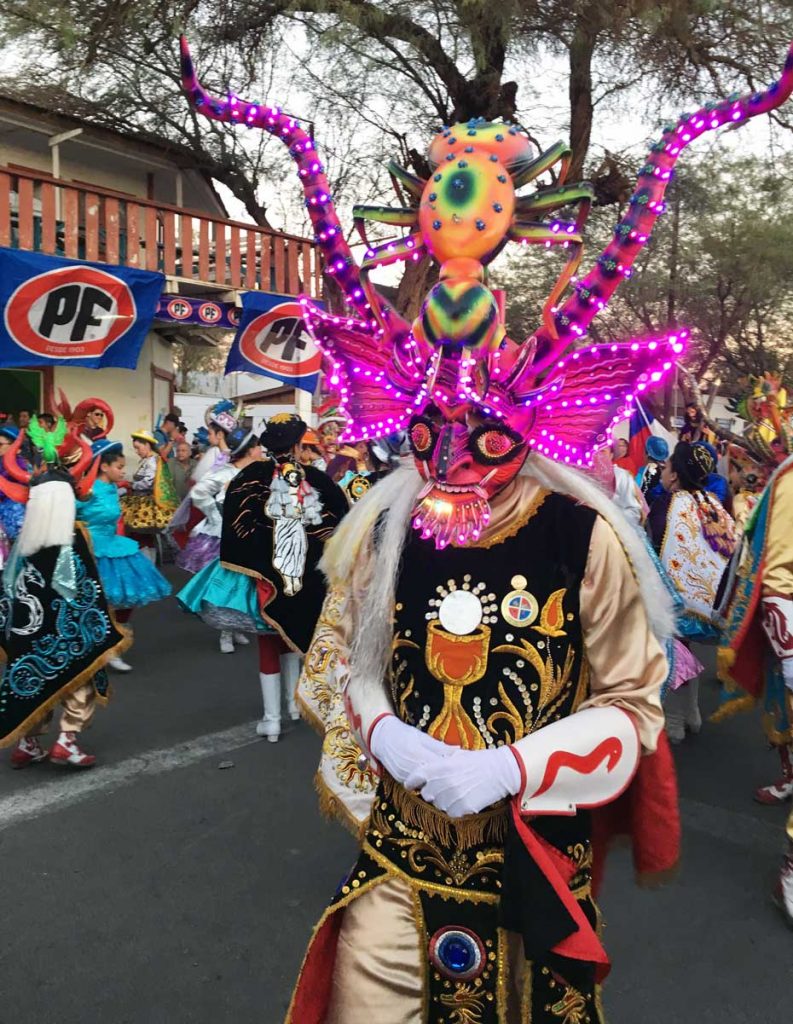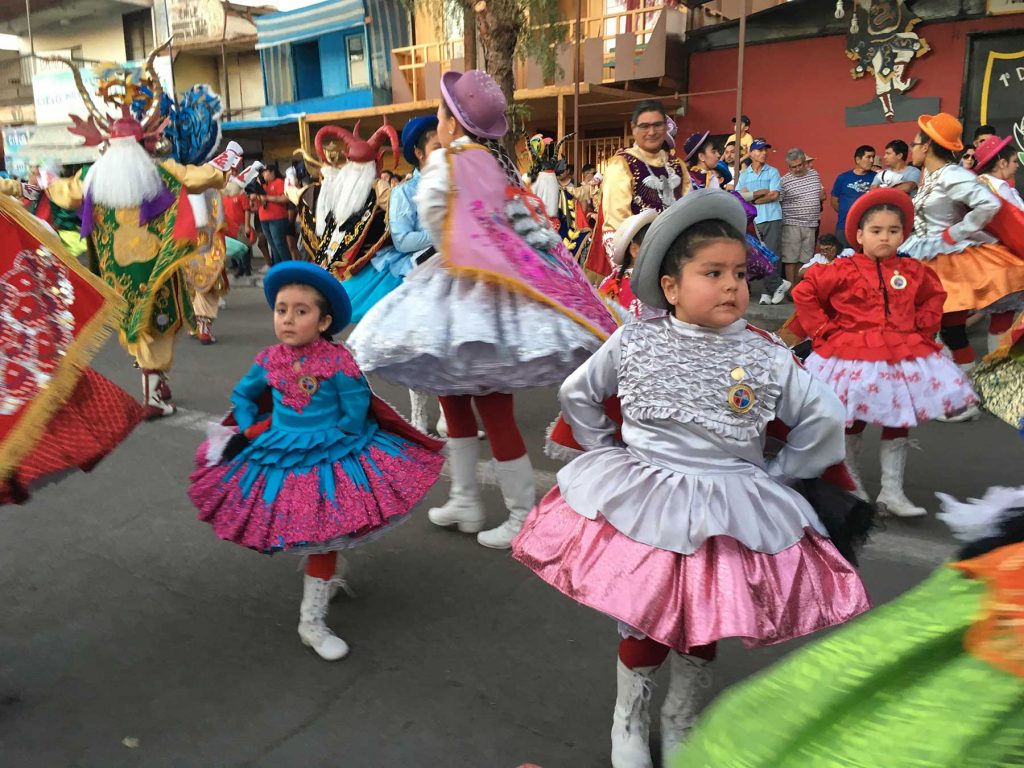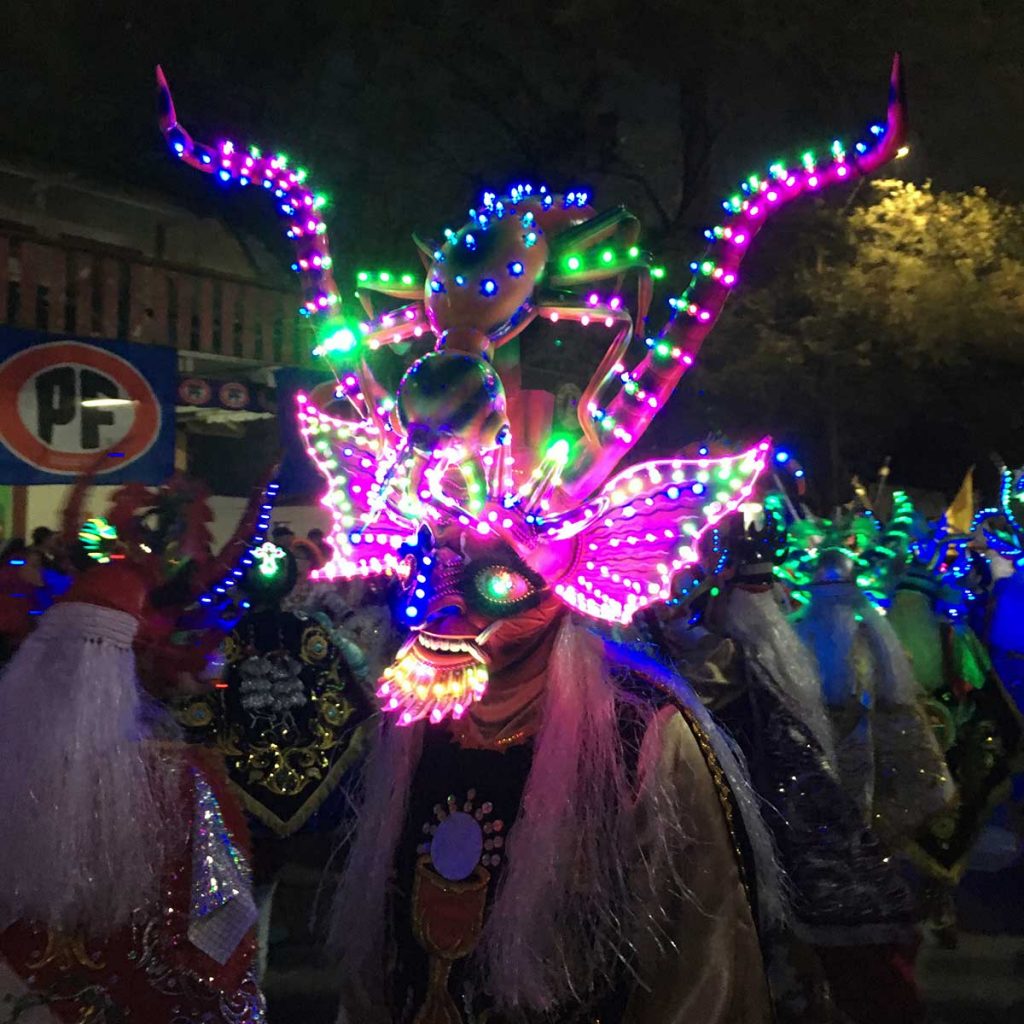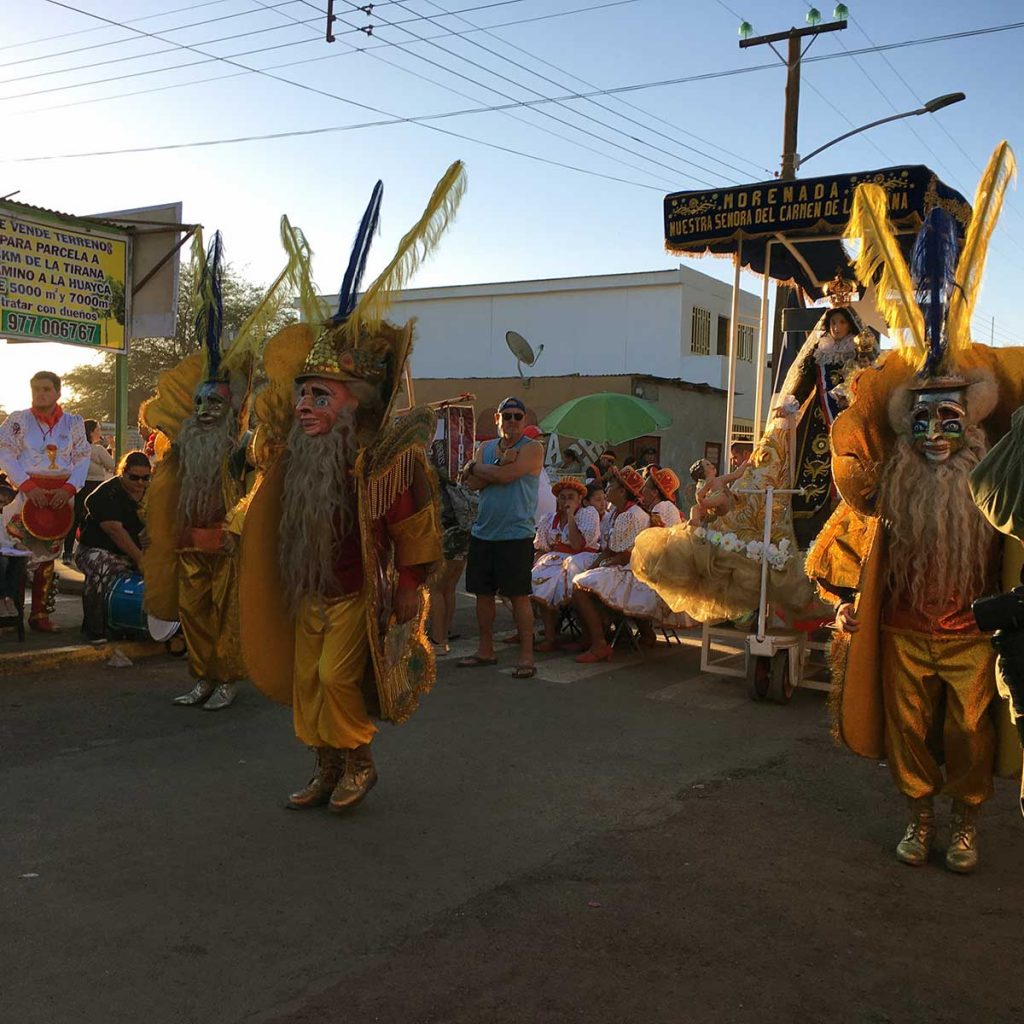The stunning north of Chile, with its desert landscapes, seems otherworldly in so many ways. Many people come to visit the oasis town of San Pedro de Atacama, a great jumping-off point for visiting the vast and varied landscapes and a great starting point for any trip to the north.
But what about the rest of the north, a longer drive from the geysers and great salt flats?
And what about the culture?
What defines this northern part of Chile, which is just a quick flight from Santiago, yet a world away?
Norte Grande
The Norte Grande (or far north) of Chile touches on the Atacama Desert and some of the warmest coastal waters (and plentiful seafood), and it is also home to some unique cultural traditions, inherited from the hard-fought history of the areas around Iquique and Arica. The area including these cities became part of the Chilean territory as a result of the War of the Pacific, and continues to be heavily influenced by Andean (including Peruvian, Bolivian and Chilean) culture and events.
La Tirana Festival
One such event is the unique celebration commonly referred to as “La Tirana.” It is a celebration of the Feast of the Virgen del Carmen, on July 16th. For a period of days surrounding this date, the tiny town (population 800) of La Tirana turns into a festival, fairground and campsite that, receives as many as 300,000 visitors. This Catholic celebration brings together Catholic and Andean symbology in a joyous, whirling, twirling, jumping, musical celebration of faith. As it lies in the Pampa del Tamarugal, only 72 km inland from Iquique, it’s easy to make a day trip of it, for a once-in-a-lifetime photographic opportunity.

You may hear La Tirana referred to as “Chile’s version of Carnaval.” But though equally visually arresting, with feathers, sequins and even LED lights, it’s important to note that at La Tirana, the clothing worn by performers is quite conservative in cut, with no short skirts or plunging necklines, nor much skin showing. This is because while Carnaval leads up to Lent, and is widely considered a last chance for excess before penitence, this celebration of Our Lady of Mount Carmel is wholly religious, and, despite the horns, flutes, drums and cymbals, it is quite traditional in nature.
The town of La Tirana owes its existence to the church there, which was originally built in homage to the tragic life and love story of Ñusta Huillac a woman who, before her death, was a feared and tyrannical military leader (thus the name, “La Tirana” or the tyrant). While that story dates back to the 1500s, the current sanctuary dates back to the beginning of the 20th century, after powerful earthquakes destroyed the original church built in her honor.
Dancing At La Tirana
The several days surrounding the feast day are filled with processions of more than 100 dance troupes and bands, doing several different types of dances. The best-known dance is the diablada, or the dance of the devil. It comes to Chile from Oruro, Bolivia, and before that, traces its routes to medieval Europe. The dance involves dancers dressed as the devil, or as his wife and typically also dancers dressed as a bear, a condor and a king. There is an order to the dancing processions, with different groups passing the church at specific times. Importantly, there are also pauses in the music and dance when Mass is being held throughout the day. Pope Francis recognized the event in January of 2018 on an apostolic visit to Chile.

The roots of the La Tirana festival back to Aymara (indigenous people of the area) mineworkers, who were generally Bolivian, who worked in the copper and silver mines in Huantajaya, Santa Rosa and Collahuasi. It later became associated with workers in the saltpeter mines, and has long served the important social function of allowing people from small towns to meet one another, including young people who might later become couples and form families.
The dancing is the most arresting part of the event for visitors, but for the faithful who dance, the religious significance is of utmost importance, and a visit to the statue of the Virgin is paramount. Many people have a manda, or a religious promise to come to La Tirana and dance, as part of their faith, and come to celebrate as well as ask for blessings from the Virgin.

While for spectators, La Tirana takes place in the days surrounding the feast of the Virgen del Carmen, for participants, it is practically a way of life, with the various groups using soccer fields and other public spaces to practice their processions and dances throughout the year, generally in the north of Chile. The best way for visitors to experience the living folklore of the diablada and other dances related to La Tirana, and to take in this truly remarkable spectacle, is to make a special trip to La Tirana during its festival days.

